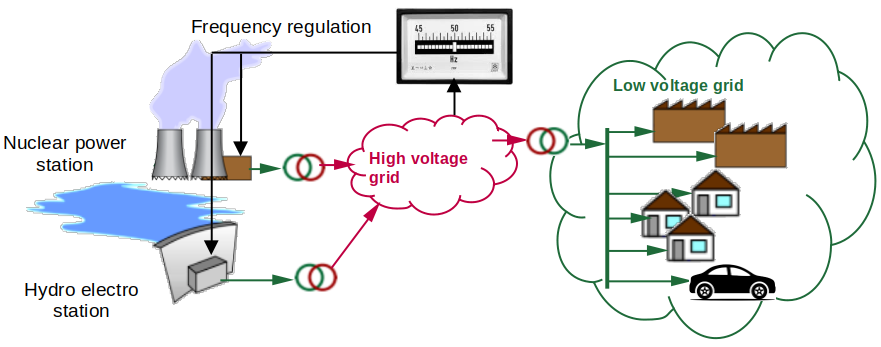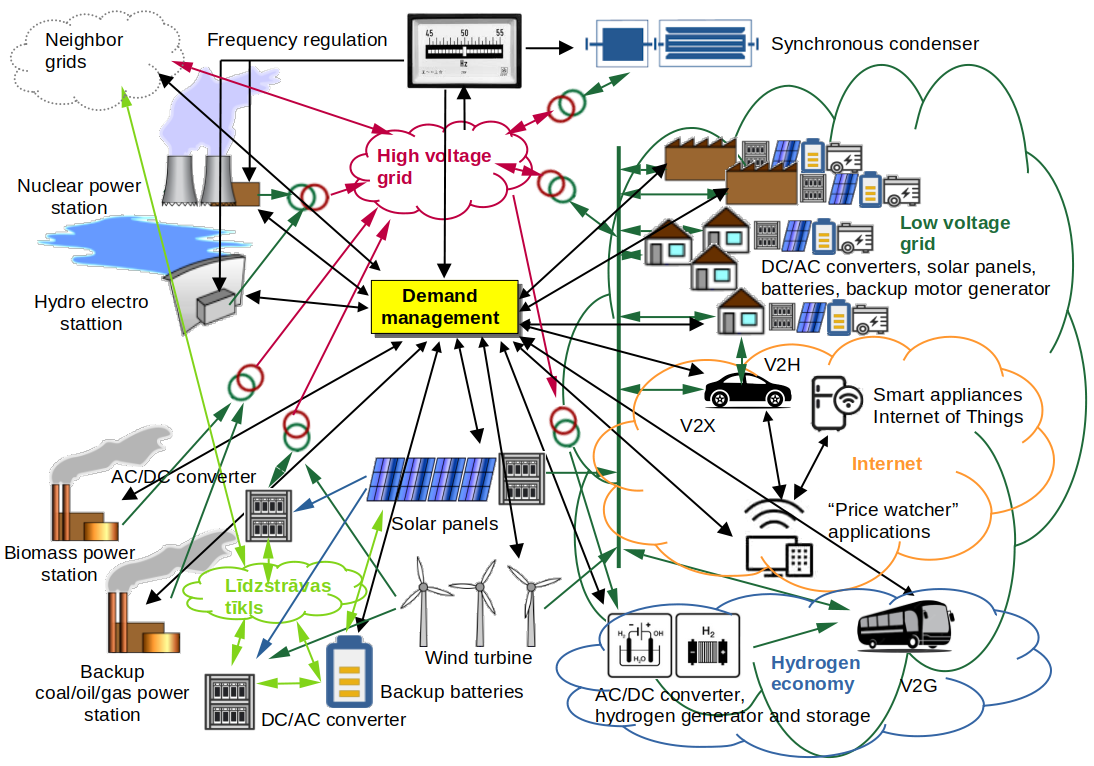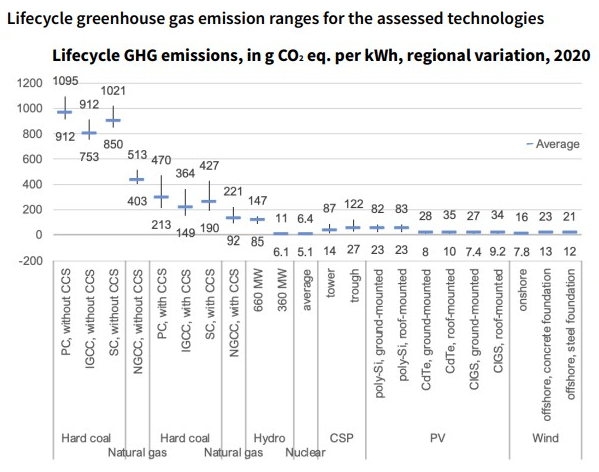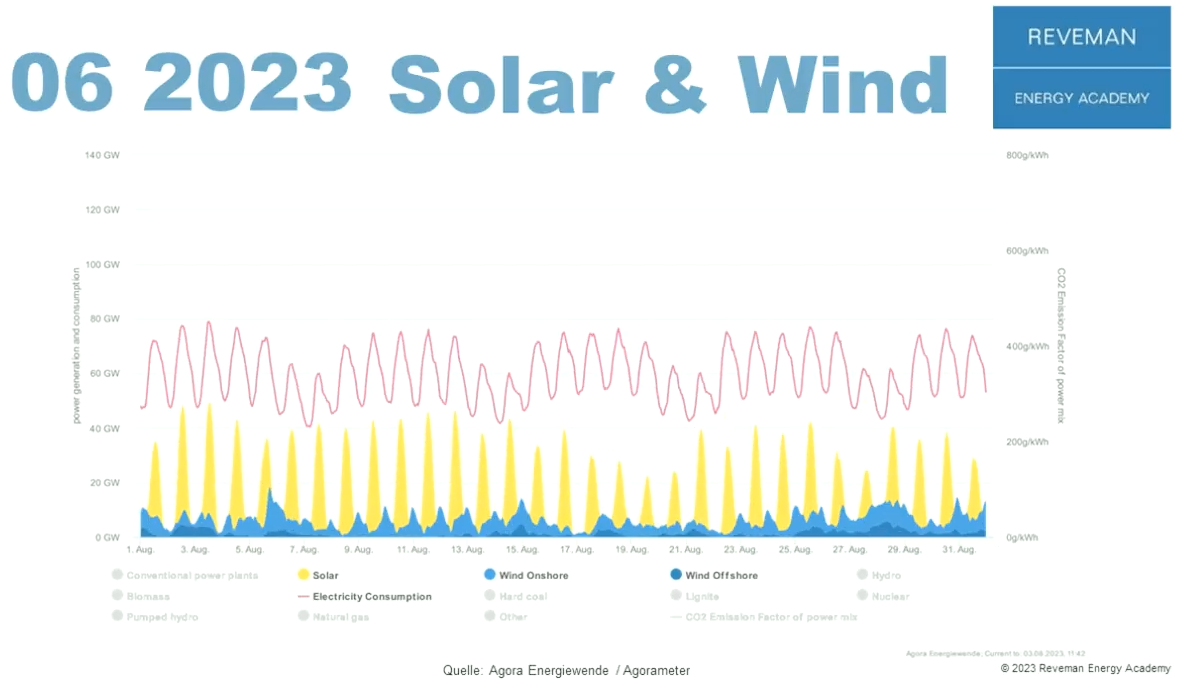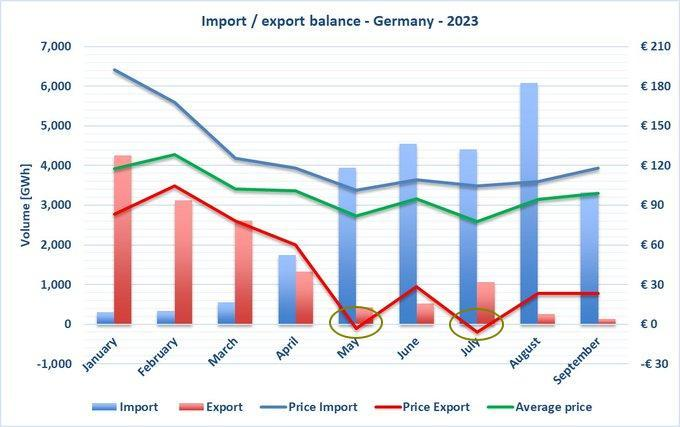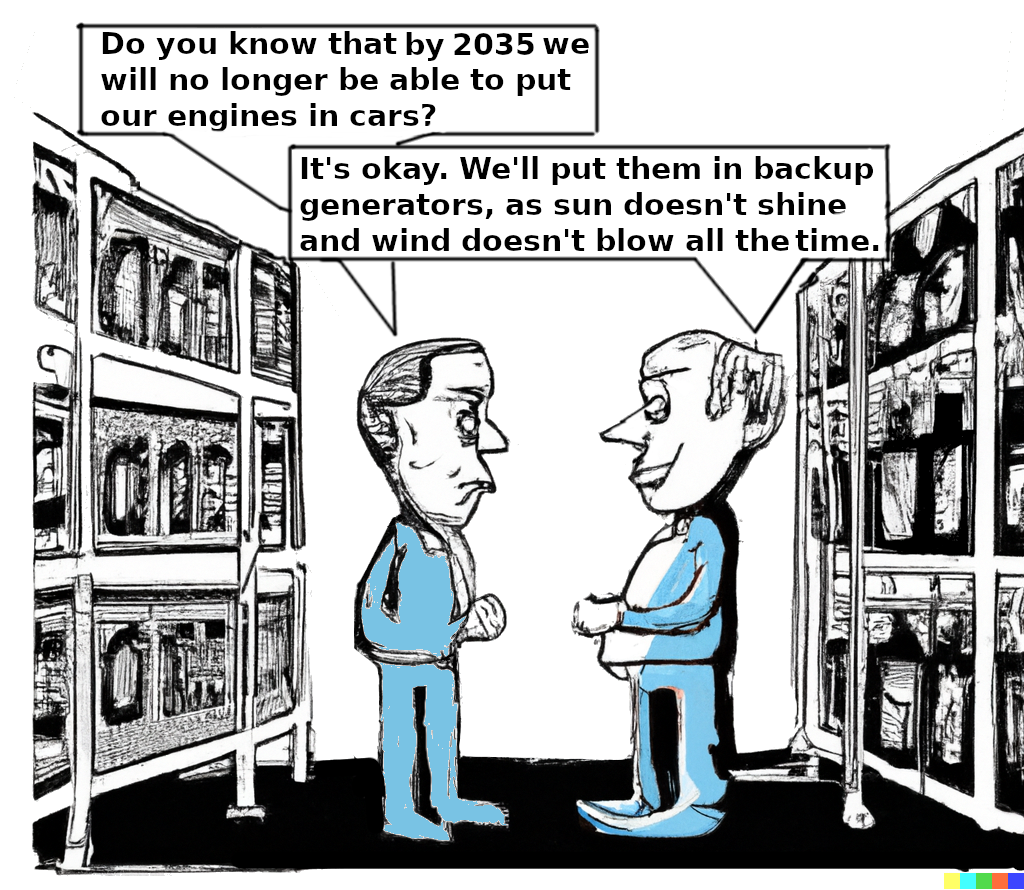- Odo.lv
- Blog
- The friend of "renewables" is not nuclear, but fossil fuels. And nuclear power is common enemy to both.
The friend of "renewables" is not nuclear, but fossil fuels. And nuclear power is common enemy to both.
Many assume climate neutrality can be achieved with "renewable" (here and further read — weak, unreliable and resource intensive) energy sources only — sun and wind. Some more moderate admit that "all means, including nuclear energy, must be used" in fight against global warming. Both of them don't realize that in fight against global warming virtually only weapon is nuclear energy, for which other energy sources are only inconveniences and unneeded waste of Earth's resources.
Since the beginning of electricity grid, electricity was difficult and expensive to produce, but simple and cheap to transmit. Electricity flowed from generators to consumers. Producers watched frequency of the grid and, if it decreased, they increased production capacity to meet increasing demand, or vice versa.
Unfortunately, we are stuck with mind virus that it is fashionable and "green" to use weak and unreliable energy sources, because they are considered "renewable". Though capacity of renewable resources cannot be controlled. They produce when they can, not when they need to. For civilization, electricity is not like food for us, which is enough to eat a couple of times a day and reserves can be stored for a week. For civilization electricity is like air for us, which is needed continuously, but reserves can be stored barely for a minute. Therefore, when sun and wind do not produce electricity, "reserve" power of fossil fuels (coal, kerosene and gas) comes to rescue. In most cases, oil or gas turbines — overgrown aircraft engines with generators — because with them it is fairly easy to follow sudden increases or decreases in the load. Only problem for fossil fuels is that, while stations are cheap to build, they are expensive to run because the main cost is the fuel. Consequently, when wind blows and sun shines, and market price of electricity falls, fossil fuel power plants become less profitable, so they are eager to give way to renewable resources.
Using unreliable energy sources requires chemical batteries, pumped water storage, water electrolysis for Hydrogen economy, transportation to home or grid, in each house a solar panel for independence from the grid in sunny days and a spare motor generator for rest of time, and many other types of energy storage. Offshore wind turbines require long transmission lines, which have too big losses by transmitting alternating current, therefore alternating current must be converted to direct current. DC-AC converters of wind turbines and solar panels cannot maintain grid frequency, so grid needs additional synchronous condensers — huge, idly running, synchronous electric motors, that use their inertia to smooth out frequency fluctuations. All this is complicated, inefficient and expensive. When market price of electricity is close to zero, it does not mean that this actual cost of electricity for the whole system. And when market price of electricity produced by unreliable sources in wrong place and at wrong time is negative, it only means that producers of such electrical waste are willing to pay for somebody to collect it. Although production of electricity with unstable energy sources — sun and wind — is relatively cheap, their energy transmission and especially storage is becoming more and more complicated and expensive.
Instead of simply producing electricity as needed, the "smart" grid introduces so-called "Demand management". Demand management was in Soviet Union, which practically meant that you couldn't get anything. When we will catch electricity like sun glitters in grass and wind in empty field, we will have to watch weather forecasts to plan, when to do laundry and when to use electric stove or charge electric car.
The simplest and most efficient systems are centralized systems. We tolerate cost and complexity of distributed systems if they provide higher reliability. However, a smart grid based on unpredictable energy resources is inefficient, expensive and yet unreliable. In state of California, USA, with its renewable energy resources, power outages are sometimes as common as in developing African countries like Niger or Chad.
Nuclear CO₂ emissions per kilowatt hour are even less than solar and wind power. Compared to total maintenance costs, nuclear power has negligible fuel costs. As with coal (and biomass) plants, nuclear plants use steam turbines, which have greater inertia than oil/gas turbines. Nuclear power plants can cope with daily load changes, but they do not need to reduce load just to make way for renewable energy sources neither because of CO₂ emissions, nor because of running costs. For nuclear power plants unpredictable renewable energy resources are just unneeded inconvenience and they can do great without them.
For nuclear giving place to solar and wind power is like sending reliable permanent workers home every time someone off the street applies to replace them. CO₂ emissions per kilowatt hour are low only in countries, where nuclear or hydropower plays a major role in energy production. (The exception is Iceland, which has considerable geothermal energy. There are ideas that geothermal energy could be used elsewhere, but with existing technologies it is not feasible.) Hydro stations also depend on location and weather conditions (available water), however, those like fossil fuels and nuclear power plants, are predictable and controllable. No country using unreliable energy sources has achieved low CO₂ emissions for electricity and Germany is a notoriously bad example.
Germany has spent 520 billion euros on its Energiewende project over 10 years. It installed wind turbines and solar panels, but shut down all its nuclear power plants. As a result, its CO₂ emissions for electricity have increased as it replaces missing production capacity by burning lignite. In addition, it has gone from being a net exporter of electricity to a net importer, seriously has damaged its economy, causing discontent among citizens and increased energy costs not only for itself but for all Europe.
Nuclear power does not require solar and wind power. This inconvenient fact is the main cause of clash between France and Germany. For Germany to meet its "green" goals, German politicians insist that French nuclear power plants must make way for German wind and solar power in favorable weather, but France refuses to do so. As a result, France exports expensive electricity to Germany when it is scarce, but Germany exports cheap junk electricity when there is overproduction.
Finland did the exact opposite of Germany and recently commissioned Olkiluoto 3 nuclear reactor. It cost 11 billion euros, which is considered very expensive. Though, when this reactor was started, price of electricity decreased not only in Finland, but even in Latvia. Germany, without even saving on design of similar reactors, could have built 45 such nuclear power plants with Energiewende's money and would have been much closer to climate neutrality, would not have depended on weather conditions, fossil fuels or neighbors.
Nuclear energy needs so few resources and people that it does not have enough advocates. If a thousand engineers and construction workers build one nuclear power plant, then with some maintenance, a few dozen people can operate it for 60—80 years, but necessary nuclear fuel can be delivered once a year and a half with a semi-truck. In a distributed grid with solar and wind energy, countless times more people are involved. As such a grid requires much more space, materials, maintenance and management. Oil and gas rig workers still extract fossil fuel needed for reserves; mine workers dig for coal extracting iron, copper, silicon and aluminum; steel manufacturers make towers and supports, cement and concrete manufacturers make foundations; plastic manufacturers make turbine blades and solar panels, electricians extend power grid and connect batteries; administrators manage Internet of Things, smart grid and device programmers program them; customer managers fight for customers with "cheaper" tariff plans. Those involved in smart grid fear, they will lose their jobs if grid goes back to being as simple as it was 100 years ago.
Many are waiting for chemical batteries to develop enough to store solar and wind energy. But there is no need to wait. The best "batteries" are uranium tablets or thorium salts. A few hundred kilograms of such batteries provide GW of power and TWh of energy for more than a year.
With fossil resources, we gain 20-50x more energy than we use to get it. With this excess of energy, we have created modern civilization and global warming. With distributed sources, gained energy is only 3-10x more than invested. It will not be enough for us to live as before. If we all would live in the same way, we would need 1.7 Earths already. With less efficient solutions, we will either need more Earths, or we will all have less access to energy and we will all be poorer. Note that worldwide electrification has already slowed down.
Only nuclear energy can provide similar (and even larger) energy gain as fossil resources. Before the fossil resource industry felt the threat of nuclear energy, children's books about nuclear energy were published "About how an atom is built" and "About how atom works", nuclear reactors were built not only in power plants, on ships and on submarines (including passenger), but were also planned for locomotives, cars and even airplanes.
When the fossil resource industry felt threatened, attitude changed. It started with the movie China Syndrome (which unfortunately coincided with Three Mile Island Reactor Accident where no one was hurt). Unfounded fear of radiation was also fueled by the Cold War armaments and still continues today. Even now Hollywood makes movies like Chernobyl or Oppenheimer. And even informative Youtube channels are making stories, How Nuclear War Will Start — Minute by Minute or Worst Nuclear Accidents in History, or How a computer chip bug almost caused a nuclear war. Although nuclear reactors have as little relation to nuclear weapons as a fireplace to firearms. There are some countries that have nuclear weapons but no nuclear reactors, and there are many countries that have nuclear reactors, but no nuclear weapons. And except hidden interests of huge, taxpayer-subsidized industry, there is nothing, what prevents number of these countries to be much bigger.
As production of electricity becomes more complicated and expensive, more and more (not only industrial, but also private) consumers prefer to use gas instead. Although many countries will ban cars with internal combustion engines from 2035, making electricity grid unreliable, consumers will need motor generators as backup sources. Demand for them is already substantial in California and in Germany.
Place for solar panels or wind turbines is where so little electricity is needed that nuclear reactor or a long power line exceeds needs. But civilization cannot be run by hopes on favorable weather. And as long as we fool ourselves into thinking we can, our dependence on fossil resources, resulting CO₂ emissions and global warming will only increase.
Created by Valdis Vītoliņš on 2023-10-04 17:15
Last modified by Valdis Vītoliņš on 2023-10-05 11:27
